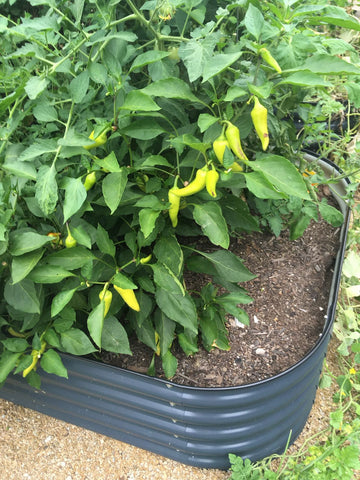Knowledge from Olle Garden Bed: Help Your Soil Maintain Moisture In Hot And Dry Climate
If you don't have too much rain this season, you will want to use soil that keeps water to make every drop of water meaningful. The following content also has some reference value for raised garden beds.
Soil management is an important part of every gardener's life. The longer you work with plants, the more you realize that they can thrive only when the soil they grow is also a prosperous and balanced mixture. However, the selection of soil is closely related to the local climate - this is the reason why hot and dry areas often encounter some unique problems. If you anticipate that the weather will be hot and the rainfall will be low in the next few weeks, please consider how these technologies can help your soil maintain a high enough water level to maintain the health and happiness of plants. If you use an irrigation system, you will be surprised at how much water is saved when these technologies work.
Mixed organics
Many soils tend to the sandy side and almost immediately drain the water they receive, or the clay side, which is compacted and difficult to obtain water even if it is retained for a long time. One of the best ways to help any type of soil is to add organic substances, such as compost or peat moss, both of which can absorb water well and drain it over time. Another advantage of organic matter is that it can also feed the soil and inject nutrients that the roots try to find anyway. Using these corrections every year can not only help your plants grow, but also keep them getting the water they need in particularly hot days.
Make the cover your friend
In hot weather, a layer of covering can well avoid excessive evaporation. For example, a layer of sawdust may become very hot, but the water discharged into the soil through them takes longer to evaporate again. Select your covering according to the cold-resistant area you live in, the native materials in the area and the materials suitable for your specific plants. Always remember that thick mulch is very suitable for reducing your irrigation tasks. You still need to move it slightly to one side to assess the dryness of the soil, but it is worth the effort.
Keep the weed bed, but use these weeds!
Most people don't think of weeding in this way, because they tend to weed in the garden just to keep the plants healthy and the garden bed beautiful, but weeding is actually an excellent measure to save tide. First of all, the weed greedily sips the water that could have been used by your favorite plants. However, when you weed on the bed, any specimen that is really removed will usually dry in the sun, and some moisture will positively increase the surrounding environment. If you are worried that weeds will take root again and come back as stronger weeds, you can put all weeded organic matter into the compost box, where water will help turn everything into useful future soil.
Try polymer moisturizing crystals
If your plants are still drying too fast, you want to try a synthetic method. Look for polymer water crystals in local nurseries. These crystals will expand like gelatin when they meet water. They will not allow most of the water to drain or evaporate, but will slowly release water, making plants exposed to water for a longer time. Although technically not a "natural" solution in most environments, these little guys are very useful for gardeners who are not ready to run soaking hoses or complex irrigation systems on their beds but still want to provide water for plants all day long.

Choose plants suitable for your environment
One of the most effective strategies to keep soil moisture at a level that allows plants to thrive is cheating: just use plants that are used to your living environment! Many of us choose plants according to what attracts us and what looks beautiful, but some of them are not easy to grow in hot and dry climate. On the contrary, if the plants you choose can survive in hot and dry conditions and maintain cold resistance, your watering work need not be so ruthless. The above technologies are still applicable, but if the plants have been used to the hardships of dry soil, they will work better and produce a more dynamic garden.
You can create a positive garden environment by selecting suitable plant species, weeding extensively, and improving the soil in a way that allows it to retain more water without being flooded. Even in a hot and dry climate, this soil is more likely to produce the beautiful flowers, fruits and vegetables you want, and it will not waste any water during irrigation. A practical gardener can give priority to covering and organic matter from the first day of the growing season, thus saving a lot of time for himself.
